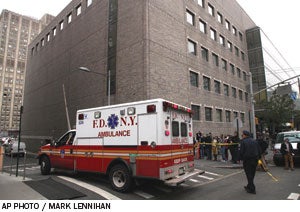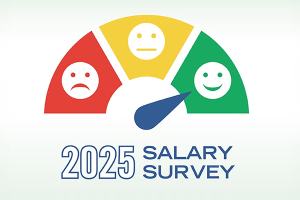Details count for the best emergency preparedness
 When it comes to emergency preparedness, Mark E. Etheridge, P.E., LEED AP, says it's smart to sweat the small stuff.
When it comes to emergency preparedness, Mark E. Etheridge, P.E., LEED AP, says it's smart to sweat the small stuff.
Etheridge is convinced that failing to pay attention to details and to analyze the potential impact of "what if" situations before an emergency occurs will cause unnecessary problems.
As senior electrical engineer and a member of the health care leadership team at the engineering firm AKF Group LLC, New York City, Etheridge knows from experience that it takes more than following required guidelines to keep a hospital functioning during an emergency.
Etheridge emphasized that point during his presentation "The Last Hospital Standing: Beth Israel in the Aftermath of Hurricane Sandy" at the American Society for Healthcare Engineering's (ASHE's) recent International Summit & Exhibition on Health Facility Planning, Design & Construction (PDC) in San Francisco and again in an interview with Health Facilities Management.
"We're given codes and lists of equipment and systems that need to be on different types of emergency power, but what we're not really taught to do is to think in terms of a process," Etheridge says.
That involves asking critical questions before an emergency occurs, and determining the impact of a problem such as a fuel shortage or inability of staff to get to the hospital.
Overall, Beth Israel Medical Center made it through Sandy in good shape, especially compared with other area hospitals only a mile away, he says. "They were really well-prepared. They weathered the storm very, very well," he says.
Despite the city's power outage, Beth Israel's backup generators worked as planned and no critical areas were without electricity. He cites a study by the Nuclear Regulatory Commission that determined most generator failures are caused by component failures.
"It takes lots of testing, lots of maintenance, lots of paying attention. You can't let parts get too old," he advises.
That philosophy helped to keep problems at Beth Israel to a minimum. One of 10 generators failed for only about 20 minutes because of a faulty fuel line. Four of 16 elevators stopped working due to a controller-relay failure, the only engineering problem that occurred, he says.
Some automatic-flush toilets did not operate for a time because they were not connected to the emergency power. Staff scoured the neighborhood for hundreds of extension cords and dozens of power outlet strips to provide power for such tasks as charging emergency radios and mobile phones, he says.
Etheridge credits the hospital's staff and their willingness to pitch in and help wherever necessary with making the difference in getting through Sandy relatively unscathed.
"I cannot overemphasize the importance of staff. They were [the] reason for the success, not a bunch of generators," he says.
| Sidebar - Tips to be emergency power-ready |
| Mark E. Etheridge, P.E., LEED AP, senior electrical engineer and a member of the health care leadership team at the engineering firm AKF Group LLC, New York City, says it's important for facilities staff to evaluate the type of emergency most likely to occur at their facility and prepare for the potential impact. "Are you likely to have a flood? Are you likely to have a thunderstorm that's going to take out a substation? Do the failure analysis," he says. Among key preparedness actions to take: • Conduct a detailed evaluation of the emergency power system that includes all system-related components. • Execute an agreement with your supplier that assures there will be delivery of diesel fuel for generators if an extended emergency occurs. • Make sure that the location of electrical equipment that supports the generator is not in an area prone to flooding. • After the emergency, review what went wrong and fix it so it doesn't happen again. |




